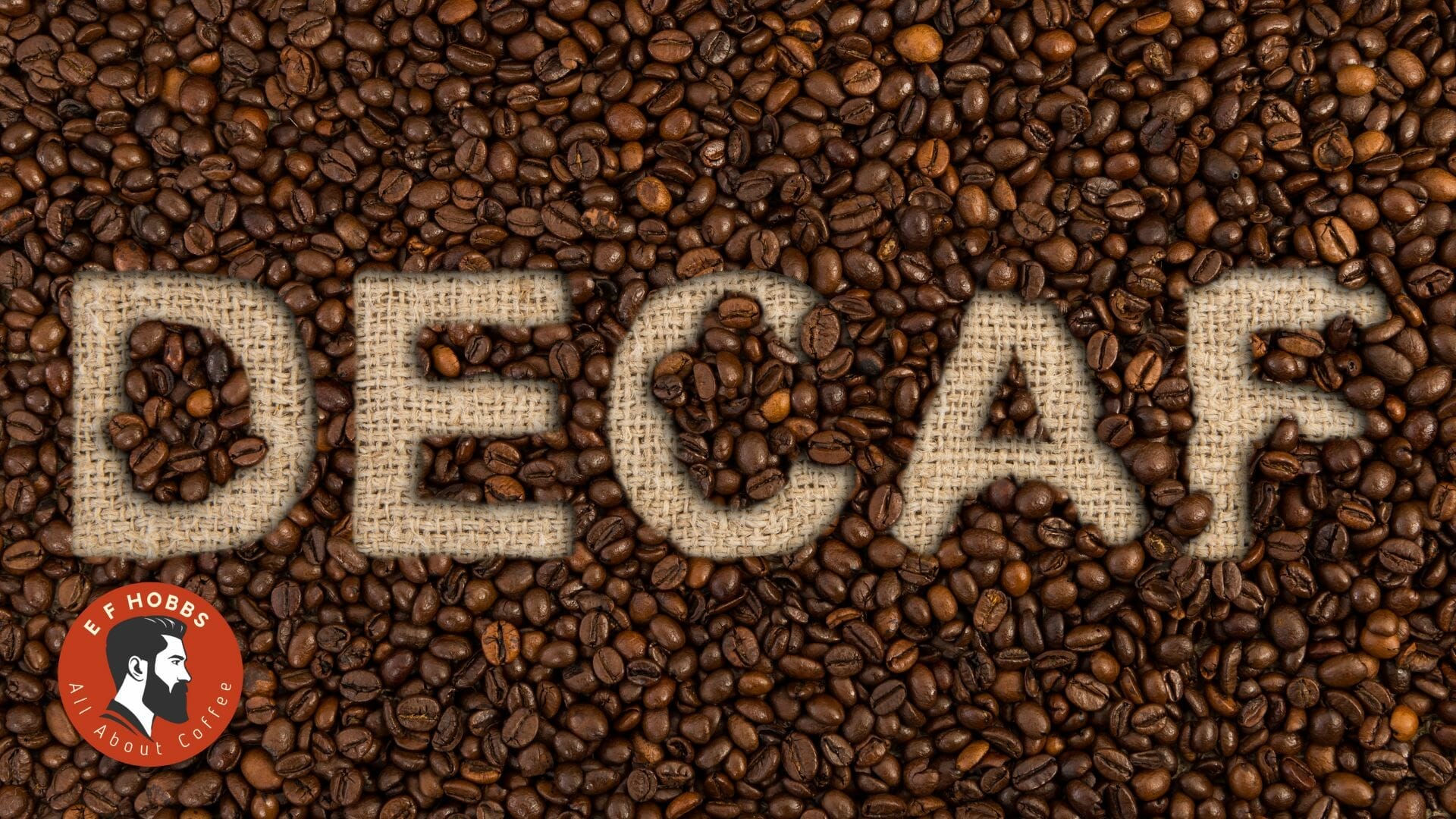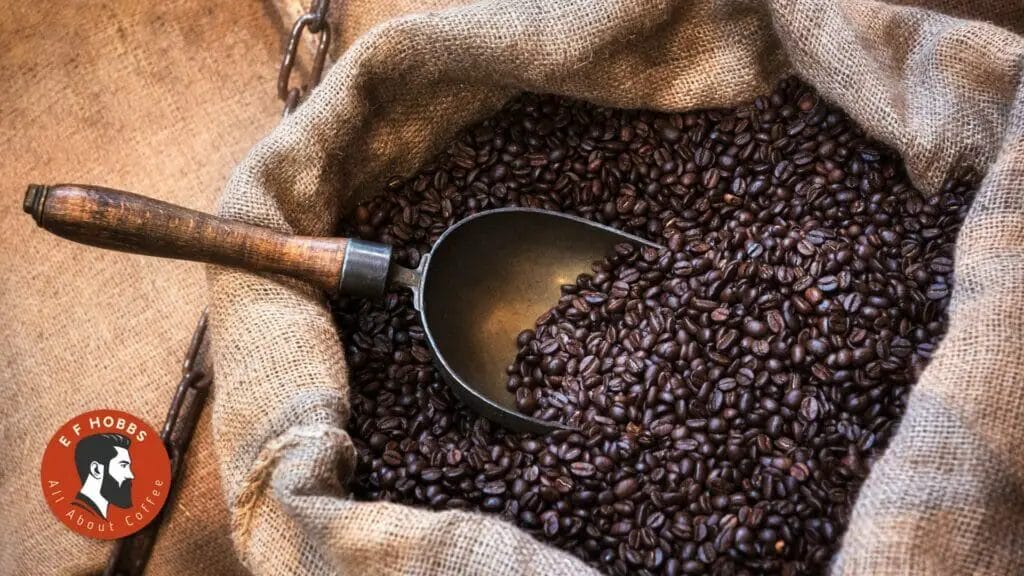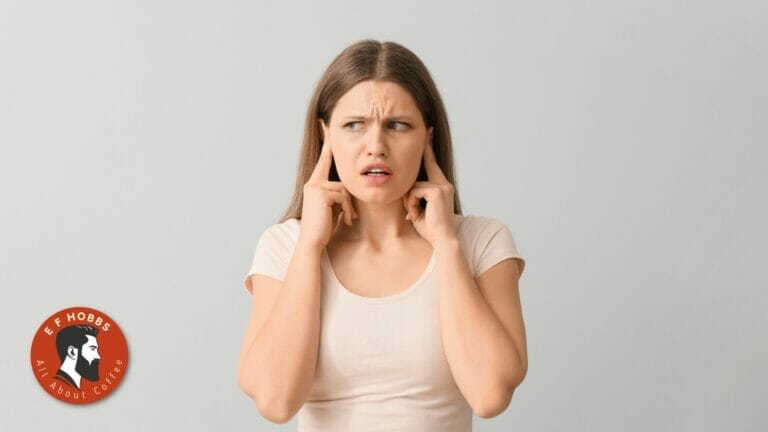How To Make Decaf Coffee Beans?

I’m here to show you how to make decaf coffee beans. Decaf coffee is becoming increasingly popular with coffee drinkers, as it allows you to enjoy the great taste of coffee without all of the caffeine.
While it can be tricky to make good decaf coffee, with a few tips and tricks, you can have a delicious cup of coffee in no time!
In this article, I’ll share my tips and tricks for making the perfect decaf coffee beans. So let’s get started!”
What All Decaffeination Processes Have in Common
No matter which method you decide to use to decaffeinate coffee beans, they all share some common features.
First, the coffee beans must be made wet before any decaffeination process can take place. This can be done by steaming or soaking the beans in water.
Secondly, the beans must be exposed to either solvents or hot water to extract the caffeine. Finally, the beans must be dried to their original moisture content.
By going through these steps, the decaffeination process reduces the caffeine content of coffee beans by up to 97%.
This means that even the strongest of coffee beans will have a significantly lower caffeine content than regular coffee beans.
While the taste may be slightly different, the resulting coffee bean should still have a pleasant flavor.
No matter which decaffeination process you use, you can rest assured that your coffee beans will still have the same flavor and aroma as regular coffee beans, just with a fraction of the caffeine content.
The Four Main Methods of Decaffeination Used Today
Decaffeination is a highly complex process and there are a range of different methods used today. Here, I’ll outline the four main methods used to decaffeinate coffee beans.
The first method is known as the Direct Solvent Method. This involves passing pressurized hot water through the beans and then introducing a solvent, such as methylene chloride, to remove the caffeine. This method is widely used due to its efficiency and relatively low cost.
The second method is the Indirect Solvent Method. This process is similar to the Direct Solvent Method, but the beans are instead soaked in hot water, which removes the caffeine.
The water is then passed through a carbon filter, which removes the solvent, before being passed back through the beans.
The third method is the Swiss Water Process. This process involves soaking the beans in hot water and then passing them through a carbon filter, which removes the caffeine.
The beans are then soaked in a solution of green coffee extract and water, which allows the caffeine to be extracted without removing the flavor compounds.
Finally, there is the Carbon Dioxide Method. This is a relatively new method and involves soaking the beans in a solution of water and carbon dioxide.
The caffeine is then extracted using a filter and the solution is then passed back through the beans.
This method is more expensive than other methods, but produces a higher-quality decaffeinated product.
No matter which method is used, the goal is to preserve the flavor of the coffee while removing the caffeine.
Decaffeination is a complex process, but one that produces the perfect cup of decaf coffee for those looking for a caffeine-free experience.
Solvents used in Decaffeination
I am always looking for ways to make coffee more enjoyable. One of the most important aspects of making great coffee is learning how to make decaf coffee beans.
Decaffeination is a process used to remove caffeine from coffee beans, and there are several different solvents that can be used to achieve this.
In this article, I will discuss the various types of solvents that can be used to decaffeinate coffee beans and the advantages and disadvantages of each.
I will also provide some tips on how to choose the best solvent for your decaffeination needs.”
The direct solvent process is the most widely used method for decaffeinating coffee. This method uses a solvent, usually methylene chloride or ethyl acetate, to selectively remove the caffeine molecules from the coffee beans.
The beans are first soaked in hot water to open up their cells and allow the solvent to penetrate. The solvent is then drawn off and the caffeine molecules are filtered out.
The solvent-free beans are then dried and the process is complete. With this method, the flavor and aroma of the coffee beans remain intact, making it the preferred method for specialty coffee.
This process is also considered to be the safest and most effective way of decaffeinating coffee.
1. The Indirect Solvent Process
The Indirect Solvent Process is the most widely used method of decaffeination. This process begins by soaking the green coffee beans in hot water for several hours, which allows the caffeine and other desirable components of the beans to be extracted.
This water is then filtered and the extracted liquid is discarded. The beans are then soaked in a different solvent, such as ethyl acetate or methylene chloride, for several hours, which helps to absorb the caffeine without removing other desirable components.
The beans are then heated to evaporate the solvent, leaving behind decaffeinated beans.
This process is unique in that the solvent does not come into direct contact with the beans, which reduces the risk of the beans being damaged or the solvent’s flavor being left behind.
As a result, this process is popular for high-end coffee beans, as it helps to preserve their flavor.
Additionally, the solvent used in this process is generally considered to be safe and is approved by the FDA.
2. The Supercritical Carbon Dioxide Process
The Supercritical Carbon Dioxide Process is another method used to remove caffeine from coffee. This process involves pumping carbon dioxide at a temperature and pressure higher than its critical point into the beans.
The CO2 acts as a solvent, extracting the caffeine from the beans while preserving the other coffee compounds. The caffeine is then separated from the CO2 and the CO2 is recycled for reuse.
This process is preferred for its ability to produce a coffee with more flavor and aroma than other decaffeination processes.
Additionally, it is also more environmentally friendly due to its lack of chemical solvents and its ability to be easily recycled.
The Supercritical Carbon Dioxide Process is a great option for those who want to enjoy the full flavor of their coffee without the caffeine.
3. The Swiss Water Process
The Swiss Water Process is a chemical-free, water-based decaffeination process that involves soaking the beans in hot water to allow the caffeine to be extracted.
The beans are then passed through an activated charcoal filter to remove the caffeine. This process is often used to decaffeinate coffee beans because it is believed to be a healthier option than chemical-based processes.
The Swiss Water Process is also widely used because it preserves the flavor of the coffee beans better than other methods, as it does not require the use of chemicals.
The process is also more expensive to produce than other methods, but the end result is a decaffeinated coffee that tastes almost as good as caffeinated coffee.
Can You Make Decaffeinated Coffee At Home?
As a world-renowned barista, I’m often asked if it’s possible to make decaffeinated coffee at home. The answer is yes, and it can be done in a few different ways.
The first option is to buy pre-roasted decaffeinated coffee beans and use them to brew your own coffee. This is the easiest and most convenient option, but it comes with a few drawbacks.
The pre-roasted beans may not be of the highest quality, and the flavor profile may be significantly different from freshly-roasted beans.
Another option is to buy green, unroasted coffee beans and roast them yourself at home. This will give you more control over the flavor, but it can be a time-consuming process.
Finally, there are chemical-based decaffeination processes that can be used to reduce the caffeine content of roasted coffee beans. These processes involve exposing the beans to either steam or solvents to extract the caffeine.
While these processes can be effective, they can also leave behind chemical residues that can affect the flavor of the coffee.
No matter which method you choose, it’s important to remember that decaffeinated coffee will never be as flavorful as its caffeinated counterpart.
However, with a little bit of knowledge and effort, you can still make a delicious cup of decaf coffee at home.
How Is Roasting Decaf Coffee Beans Different From Roasting Regular Ones?

When it comes to roasting decaf coffee beans, there are some key differences compared to roasting regular coffee beans.
As decaf coffee beans have already been through the decaffeination process, they may require a slightly longer roasting time in order to bring out their full flavor.
Additionally, decaf coffee beans may require a slightly lower temperature to avoid over-roasting and burning the delicate flavors present.
This is especially important as it is difficult to reverse the effects of over-roasting. Finally, it is important to remember that decaf coffee beans are generally denser than regular coffee beans, so the roast time must be adjusted accordingly.
With the right technique and attention to detail, roasting decaf coffee beans can be just as enjoyable as roasting regular beans.
Why Is It So Difficult To Make Good Decaf Coffee?
Making great decaf coffee is incredibly difficult because it requires successfully removing the caffeine without changing the flavor of the beans.
Decaffeination processes can introduce a variety of problems, like unwanted flavors and aromas, which can drastically affect the taste of the final product.
To make a cup of decaf coffee that has the same flavor complexity as a cup of regular coffee, the beans must be carefully selected and the decaffeination process must be well-managed.
The beans must be roasted at the correct temperature and for the correct length of time to bring out the natural flavors of the beans, and to ensure that the flavor and aroma of the beans are preserved.
The process of decaffeination itself can also introduce off-flavors. For example, in some processes, chemicals are used to extract the caffeine from the beans.
This can result in a cup of coffee with a slight chemical taste. Additionally, some processes require the beans to be steamed, which can also reduce the flavor of the beans.
Overall, making great decaf coffee is a complex and difficult process, but with the right beans, roasting, and decaffeination process, it’s possible to make a cup of decaf coffee that is just as delicious as regular coffee.
Is Decaf Coffee A Diuretic?
When it comes to decaf coffee, many people are concerned about its potential diuretic effect. Fortunately, numerous studies have shown that decaf coffee does not act as a diuretic in the same way regular coffee does.
In fact, decaf coffee has been found to have no significant diuretic effect at all. This means that enjoying a cup of decaf coffee will not lead to an increased need to use the bathroom, as is the case with regular coffee.
That said, decaf coffee does contain caffeine, albeit in much lower doses than regular coffee.
Caffeine is a stimulant and has been known to act as a mild diuretic, so it is possible that decaf coffee could have some diuretic effect.
However, the amount of caffeine present in decaf coffee is usually too small to induce this effect.
Overall, it is safe to conclude that decaf coffee does not act as a diuretic and shouldn’t pose any risk to your bladder health.
In fact, drinking decaf coffee might even benefit your bladder health as it contains antioxidants that can help reduce inflammation and improve bladder functioning.
Will Decaf Coffee Keep Me Awake?
The short answer is, not really. Decaffeinated coffee contains a much lower amount of caffeine than regular coffee and therefore, won’t do much to keep you awake.
Decaf coffee is ideal for those who don’t want the stimulating effects of caffeine but still want to enjoy a cup of coffee.
As a World Barista Champion, I recommend decaf coffee to anyone who wants to enjoy a cup of coffee without the caffeine jolt.
Decaf coffee is made by removing the caffeine from regular coffee beans. This is done by using a chemical process, where the beans are soaked in a special solution that removes the caffeine.
Depending on the process used, some of the flavor and aroma of the coffee may be lost, but the flavor and aroma of decaf coffee are still quite good.
Decaf coffee is a great option for those who want to enjoy a cup of coffee without any of the stimulating effects of caffeine. It’s a great way to relax and enjoy a cup of coffee without the caffeine buzz.
How Much Caffeine Is In Decaf Coffee?
The amount of caffeine in decaf coffee can vary greatly. Generally, decaf coffee contains between 2-15 mg of caffeine per 8-ounce cup, depending on the variety of beans used and the method of decaffeination.
Generally, decaffeinated coffee contains less than 0.2% caffeine, compared to the 95-200 mg of caffeine in the same amount of regular coffee.
When brewing decaf coffee, it is important to remember that the amount of caffeine you get in your cup will depend on the method used to decaffeinate the beans, as well as the size of the grind and the brewing time.
If you are looking for the lowest possible caffeine content, then opt for a light-roast decaf coffee and use a coarser grind. This will reduce the extraction time and result in less caffeine in your cup.
Conclusion On How To Make Decaf Coffee Beans?
Overall, making decaf coffee beans is a simple process that can be done at home. By using an at-home machine, water, and the desired coffee beans, you can make delicious decaf coffee with the same flavor and aroma of regular coffee.
While the caffeine content of decaf coffee may be lower than regular coffee, the flavor of the beans remains the same.
With a bit of patience, you can make a great cup of decaf coffee that you can enjoy without the worry of caffeine intake.
As a world barista champion, I highly recommend trying out this method of making decaf coffee beans at home.






